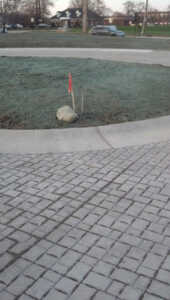In Cuyahoga County, every road corridor is embedded in a larger system of land use (including local and regional destinations), as well as in a regional street network. When developing a road design, communities are encouraged to consider land use and connectivity to destinations to determine mode priorities.
Consider Development Patterns
Analyze existing and future transportation context as well as the development patterns, street network, and what type of project to implement. Cuyahoga County’s street types include commercial, industrial and residential roadways of varying density. Different adjacent land uses and densities may require different complete streets treatments along the same corridor.

Consider Multimodal Options
Review the right-of-way and current road conditions to determine mode priorities based on typology and local needs. Multimodal level of service (LOS) informs roadway design to ensure that streets are shared by all users as well as cars; that may incorporates pedestrians, people with disabilities, bicyclists, and transit users.

Consider Stormwater Management
Complete streets should also consider de-icing alternatives and green design elements that promote an environmentally sensitive, sustainable use of the public right-of-way. Incorporate street trees, rain gardens, bio-swales, paving materials and permeable surfaces, with plants and soils that slow and store rain water to reduce flooding and pollution.

The Cuyahoga County Complete Streets Toolkit is a guiding document to assist communities in implementation. Complete streets may result in a different character in each of our 59 communities, however, the Toolkit provides a common language and goals for planning a regional transportation network.
Depending on the existing level of interest in complete streets, community leaders can find guidance in this document on:
- The basics of complete streets
- Design examples and explanations of design elements
- Tips and tricks for implementation
The Department of Public Works and the County Planning Commission are happy to assist community leaders with any questions they might have regarding the use of the toolkit or the implementation of complete streets.
Local examples

By adopting a Complete Streets policy, communities have the ability to approach transportation projects with a design that results in context-sensitive solutions for livable streets. The City of Cleveland adopted a complete and green streets ordinance in September 2011, and developed a Complete and Green Streets Typology and Design Manual as a tool for effective implementation. In October 2008, the City of Broadview Heights adopted a Bike Path Plan for its city streets.
